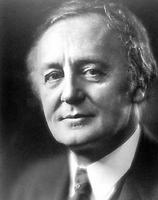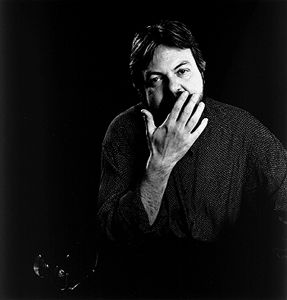
Oral Literature in French
Oral Literature in French, including tales, songs, sayings, legends, superstitions, proverbs and other forms, is part of the heritage left by the first French settlers in North America. Transmitted orally through the centuries, these anonymous traditional forms have enjoyed an excellent environment (an immense, predominantly rural region) for their preservation and transmission. By the 19th century, Ernest Gagnon and others first felt the need to preserve them in written form, but they still circulate orally today, despite the pervasive presence of the mass media. French Canadian oral literature remains faithful to its origins although, after 3 centuries in the new land, it has evolved, adapted and acquired both autonomy and originality. Since it is not formalized in writing, oral folklore is in a state of perpetual change. Popular tales have been handed down from the earliest days of French civilization. Most of the legends deal with universal themes, but some, concerning historical events and characters, began in Québec. Innumerable different versions of songs have resulted from exchanges between immigrants from different French provinces; as with legends, the repertoire of folk songs grew in the new land to include songs about the coureurs de bois, the voyageurs of the pays d'en haut, and life in the forest.
The 19th century was still the golden age of the traditional tale, and storytellers were very popular. Crowds spontaneously formed around tramps and peddlers to hear the stories of La Grand'Margaude, La Bête à sept-têtes, La Canarde and L'Eau de la Fontaine de Paris, and the incredible adventures of Ti-Jean. In rural areas, people liked to organize entire evenings of storytelling. Forest life was important in preserving and spreading tales, as lumberjacks and raftsmen fought the boredom of long isolation by gathering to tell each other tales in the camps.
Although formal study of folklore in America began relatively recently, each of the major oral genres - tales, legends and songs - is the subject of study and research. Until the early 20th century, popular tales had such vitality that few felt the need to collect them. Their scientific collection and study really began in 1914 with Marius Barbeau, an anthropologist with the National Museums of Canada. Although his field was native peoples, his attention was drawn to francophone folklore by Franz Boas, an American colleague interested in European influences on Canadian Indians. Barbeau's research very quickly extended to all Québec.
Barbeau and his collaborators, Adélard Lambert, Gustave Lanctot, Édouard-Zodique Massicotte and others, presented their rich find to the general public. Since that time, general interest has continued to grow. Among the major publications on the subject, the Journal of American Folklore contains more than 200 tales in the francophone repertoire. The most important collections are that of Father Germain Lemieux of Sudbury, Les vieux m'ont conté (18 vols, 1973 ff), Carmen Roy's Contes populaires gaspésiens (1952) and the other volumes of the Mémoires d'homme collection, Contes de bûcherons by Jean-Claude Dupont (1976) and Conrad Laforte's Menteries drôles et merveilleuses (1978).
After working with Barbeau, Luc Lacourcière, a teacher of Canadian literature at Université Laval, made the popular tale his preferred field of research; in 1944 he founded the Folklore Archives at Laval. Thirty years later, his inventory and analysis of several thousand tales from various sources provided him with material for the first Catalogue raisonné du conte populaire français en Amérique. This exceptional work will help complete the international catalogue of tales prepared by Stith Thompson on the basis of work by Antti Aarne (Motif Index of Folk Literature, 6 vols, 1955-58) and the catalogue developed in France by Paul Delarue and Marie-Louise Ténèze (Le Conte populaire français, 1957-64).
Popular tales are composed in a particular style. First, they are marvellous recitations whose sole purpose is to amuse. They often begin and end with well-known sayings. Usually the action is not located in any particular place or time and the characters are not seen as individuals. They are animals, magical beings (kings, princes, princesses or fairies) or fantastic beings (ogres, monsters, giants) who change form, use charms, potions and talismans, and dominate the elements of nature. The tale is therefore not intended to be believed, but to be enjoyed as pure fiction. Unlike tales, legends appear to have historical bases that appeal to the listener's credulity. The site of the action is often indicated with great precision and the characters are carefully developed in space and time. In French Canada, legends have come down in a manner different from that of the tale because the 19th century has left many legends in print.
The work of Aurélien Boivin, Le Conte littéraire québécois au XIXe siècle (1975), provides an exhaustive treatment of them. Québec writers in the 19th century used "conte" to mean legend rather than the traditional tale, although the forms have been distinct in the eyes of both modern folklorists and the original illiterate audiences. By their nature, legends lend themselves more easily to written presentation, and Canadian authors have drawn abundant material from them. Philippe Aubert de Gaspé (father and son), N.H.É. Faucher de Saint-Maurice, Honoré Beaugrand, Henri-Raymond Casgrain and many others have used werewolves, sirens, ghosts, the legend of La Corriveau or Alexis-le-Trotteur and a host of others. As Lacourcière notes, the many categories of legends include those dealing with the fantastic and the supernatural, those attempting to explain the origins and causes of natural phenomena and those more directly related to history and to real persons; and this is not a complete classification.
The third major genre in oral literature is song (see folk music). It has been said that song gives full expression to the French spirit and, consequently, that it is the richest, most vibrant and most pleasant of French Canadian traditions. The reason is perhaps that song is suited to all life's circumstances and to all ages. Religious at times, ribald at others, its themes encompass the full range of human feelings. Its form, rhythm and assonances have preserved it from the ravages of time. In a rigorous classification, more than 3000 titles of folk songs contained in Laforte's Le Catalogue de la chanson folklorique française (1958) reveal all the themes treated in this form of popular poetry, which is often mixed with uniquely Canadian variations.
In the many French Canadian regions, folklorists, ethnomusicologists, researchers in various disciplines and lovers of the oral traditions continue gathering this important part of French Canada's cultural heritage. The documents they produce are the subject of study and research and are preserved and scientifically treated in archives in Québec, Moncton, Ottawa, Sudbury and elsewhere.

 Share on Facebook
Share on Facebook Share on X
Share on X Share by Email
Share by Email Share on Google Classroom
Share on Google Classroom


